– Today we are pleased to introduce Joseph A Ranney as part of the Wisconsin Historical Museum’s History Sandwiched In lecture series. The opinions expressed today are those of the presenter and are not necessarily those of the Wisconsin Historical Society or the museum’s employees. JA is a lawyer with DeWitt Ross & Stevens SC in Madison. His practice consists mainly of business, intellectual property, and civil rights litigation. He’s also an adjunct professor of legal history at Marquette Law School in Milwaukee and is the Adrian Schoone Fellow for the study of Wisconsin legal institutions at the law school. He has written several books and articles on legal history and other legal topics, including “Trusting Nothing to Providence: A History of Wisconsin’s Legal System,” “In the Wake of Slavery: Civil War, Civil Rights, and the Reconstruction of Southern Law,” and “Wisconsin and the Shaping of American Law.” Here today to discuss how state laws have shaped American history, please join me in welcoming JA Ranney. [applause]
– Thank you, Katie, and I want to thank everybody for coming out today. So you may be wondering, how did this book come about? Well, when I first became a lawyer, more years ago than I care to think about, when you’re a young lawyer, you spend a lot of your time in law libraries and in the back rooms of the law firms looking at case law and doing legal research. As I did that, I had occasion to look at a number of ancient volumes of the Wisconsin Supreme Court reports. And when I read those, I discovered kind of a lost world. Cases involving logging rights up north, cases involving buggy accidents and other things from an era that’s long past. And I really came to ask myself, well, what was life like then? How did these legal issues come about, and how do they affect the legal system under which we all lead our lives today? So one thing led to another, and ultimately I wrote the book that Katie showed you, “Wisconsin and the Shaping of American Law,” which is what I want to talk about today. I wrote the book to answer several what I consider important questions involving Wisconsin history and particularly Wisconsin’s legal history. The first thing that’s of interest to me is this: if you are at all interested in legal history or legal affairs generally, the vast majority of literature and publicity that’s available concerns Congress and the federal courts. Every day when we open up the newspaper, we see something about the Supreme Court or we see what antics are going on in Congress today, but you see very little about what’s going on in state government, and particularly with our State Supreme Court. That’s true in other states as well.
And that’s a shame because really your daily lives are governed much more by state law than they are by federal law. Under the US Constitution, the federal government and federal courts have very limited powers to shape the law, but things like everything from tort law, if you get in an accident what law is going to apply, to trusts and estate laws, when you die what law says who your property is going to go to, that’s all governed by state law. So I asked myself, would it be appropriate to cast more of an eye on state law than has been done here before? Another thing, and I became particularly aware of this as I was writing the book, is are there patterns in state and regional legal development.
What, in fact, are the regions of the country? If you look at the map at the bottom, you’ll see you can define the different regions of the United States in very non-traditional ways. You can divide the United States into four or five regions or multiple regions, as are shown on the map here. I particularly have taken some time to look at New England law and southern law and other contexts, and I’ve asked myself what is unique about Wisconsin, what is unique about Midwestern law, but, conversely, what have we done to shape law in other regions. And a closely associated question is you can look at Wisconsin law sort of using the metaphor of a double lens. On the one hand, has Wisconsin been a pioneer of the law? Have we influenced other states? And looking at the other side of the lens, how has our law been shaped by the developments of other states? The book addresses both of these questions. It gives sort of a narrative history of the evolution of law in Wisconsin, but it also takes about how law in other states has evolved at the same time. So, with that, what I would like to do for the rest of the talk today is two things. First, I’m going to walk you quickly through the 12 chapters of the book. I obviously have nothing like enough time to give you any detail whatsoever about how the book goes, but I do want to give you a sense of the sweep of the book in the hope that if you hear something interesting as I talk today, you’ll go to the book and dive a little deeper into the detail. And the second thing I want to do, I want to end the talk today by giving you just three examples, three snippets out of the book which I think illustrate the themes that I’ve been talking about.
So let me walk you through the chapters of the book. The book starts off talking about the law in Wisconsin before Wisconsin became a state. I think many people don’t remember it, but for 200 years of, nearly 200 years of Wisconsin history, from the time that the first white settlers came in the 1630s up until about 1800, Wisconsin was actually part of French North America, and it was governed under the French civil law system, which is very different from the Anglo-American common law system. So the book talks a little bit about the differences between French law and Anglo-American law, and it also talks about the fact that once Wisconsin and the trans-Appalachian area of North America came under American control, common law came in very quickly with American settlers. America was an empire in many senses, and I think one thing we sometimes forget is that it was also an empire of laws. The British common law system has adapted to unique American needs very quickly took over the frontier areas and did make the US preeminent legal power in the world as well as a power ultimately in other ways. Chapter two talks about law on the frontier. It goes roughly from about 1810 up until statehood. We became a state, of course, in 1848. The book talks about a number of different things.
For example, it talks about James Doty. Now, some of you Madisonians may kind of vaguely know of James Doty as the founder of Madison. Well, in addition to being Madison’s founder, Doty was Wisconsin’s first judge. He became a territorial judge in 1823. When Wisconsin had gotten enough white settlers, the Congress believed it was time for Wisconsin to have its own judge. And Doty had an incredibly challenging task to establish a court system in Wisconsin. In 1823, Wisconsin was almost entirely a wilderness. There was no European/American court system at all. Doty had to travel from Mackinac Island down to Green Bay and then over to Prairie du Chien and back again. That was his judicial circuit.
He had to establish courts in every place. He had to appoint sheriffs, establish the rudiments of a law enforcement system, and he had to gain, he had to command respect for the legal system, which was not always easy in a frontier territory where many of the people who had come there had come to Wisconsin precisely because they wanted to get away from legal systems. So Doty had a very challenging task. He was highly successful at establishing the building blocks of a court system, and that is relatively little known but very important part of his legacy to Wisconsin. So chapter two talks quite a bit about him. Chapter three talks about a Jacksonian jurisprudence. You guys may remember from your high school and history college courses, Andrew Jackson was an Indian fighter. He was the winner of the Battle of New Orleans, and he came in as kind of the people’s president in the late 1820s. Very few people, though, even among legal scholars, have taken a look at what Jacksonian reforms meant for American law. I asked myself the question, well was there a distinctive Jacksonian legal movement? And Wisconsin turned out to be a very good laboratory for looking at that question.
And the conclusion I came up with, which is outlined in the book, is there was a distinctive Jacksonian legal reform movement, and much of it was expressed through Wisconsin. Jacksonian legal reforms kind of went in several different phases. Very wide ranging. The very phase dealt with expansion of suffrage. Prior to Jackson’s time, most states only allowed property holders, wealthy, white males to vote. Jackson’s time did not extend the suffrage to African Americans or to women, but it did expand the vote to include pretty much all white males whether they owned property or not. The second phase of the Jacksonian movement involved the regulation of banks. I think we’ve all read about his fight with the Bank of the United States in our history textbooks. And it also involved a battle against corporations. During the Jacksonian era, the Industrial Revolution started, and with the Industrial Revolution, came the modern corporation.
Jacksonians at one level realized that corporations, particularly banks, were necessary in order to convert America from an agricultural society to a more modern society, but, at the same time, they worried that banks were bigger than any type of corporation that had ever been known before. They worried that because banks had the money, had the power, they would be a threat to democracy. So, much of the legal history of the Jacksonian era involves the fight over banks. This fight spilled over into Wisconsin’s constitutional conventions. In 1846, shortly before we became a state, we had a constitutional convention where Edward Ryan, who later became the chief justice of Wisconsin, introduced a provision basically abolishing banking in Wisconsin. Ryan being a good Orthodox Jacksonian. There was a big fight about that. Ultimately the people rejected that constitution at the polls because they thought it had too many Jacksonian reforms which were better left to the legislature rather than being enshrined in a fundamental document like the Constitution. So Wisconsin’s Constitution, as it was finally enacted in 1848, is a reformed Jacksonian document, but it is much more conservative than Jacksonian radicals like Ryan wanted it to be. A very interesting story of how our state’s fundamental constitutional structure was put in place.
Moving along. Chapter four talks about the first 20 years of Wisconsin’s statehood, from roughly 1850 to 1870. This was, this era spanned the threshold of the Civil War and the years immediately after the war. It was a time of cataclysmic change in America generally. And that was particularly true in Wisconsin. The book talks, for example, about a famous case called the Booth Cases, which some of you may have heard of. In 1850, Congress passed what is called the Fugitive Slave Act, which for the first time required northern law enforcement officials to assist southern slave owners in recapturing their fugitive slaves. The law was hugely unpopular throughout the north. The abolitionist movement, the legal wing of the movement, made efforts to get the law declared unconstitutional. Several northern judges basically said, I don’t like the law but the US Supreme Court has indicated that it is constitutional so, reluctantly, we have to uphold it.
Wisconsin was the only state that strayed from that path. In 1854, the Wisconsin Supreme Court, in a case involving local abolitionist Sherman Booth, declared that the federal Fugitive Slave Law was unconstitutional. The case went up on appeal to the US Supreme Court. The US Supreme Court reversed the decision and said, yes, you must uphold the law. And the Wisconsin Supreme Court, when the decision came down, basically said “pound sand.” And there was, as a result, a battle between federal authorities and Wisconsin state authorities over that issue that didn’t get involved, didn’t get resolved until the Civil War came along. There were other controversies too. For example, there was a big depression in 1857. As a result, many debtors wanted to get out of their debts, and there was a battle between them and the Wisconsin Supreme Court. And there were continuing battles over establishing the legitimacy of the Wisconsin Supreme Court.
Many people still thought I don’t really know why I have to follow the court’s decisions. But, ultimately, in the 1850s, the court did establish its authority, and chapter four talks about that. Chapter five goes to the end of the Civil War and talks about, talks about Wisconsin’s efforts to accommodate its legal system to the industrial age. The era immediately after the Civil War was the age of railroads in Wisconsin. That is when Wisconsin went from being kind of having a primitive transportation system consisting of little more than dirt roads to having a rail network that by 1900 had spread throughout the state. The railroads transformed life in Wisconsin. They made it easier to get around. They gave Wisconsin, I would submit, a sense of its true statehood for the first time. People had a sense that they were more than just citizens of their local communities. They could do more than just go from the farm into town and no further.
They now could get around the state. They had a real sense of Wisconsin as a state. But the railroads, although they did much good for Wisconsin, also brought problems. After the Civil War, railroads started to raise their rates. They started to discriminate among various classes of customers in their rates. And the old Jacksonian fears of untrammeled corporate power rose once again. In 1874, Wisconsin joined in a revolt that was really centered in the Upper Midwest against railroads. We joined Iowa, Illinois, Michigan in passing what were called Granger Laws, laws that regulated railroad rates, other railroad practices. The Granger Laws were the first great American regulatory laws. They really marked the birth of our modern regulatory system.
Railroads fought back. They invoked a clause in the US Constitution saying that citizens may not be deprived of their liberty or property without due process of law. They argued, essentially, that, hey, if you regulate our rates, then you are depriving us of our liberty and property right to charge whatever we want for our services. Courts in some states accepted this argument. In Wisconsin, though, in a case called the Potter Law case, Chief Justice Edward Ryan, the old Jacksonian who had caused such a ruckus 25 years earlier when Wisconsin’s Constitution was created, Ryan is now sitting as chief justice, and he issues a decision upholding the state’s power to regulate corporations. That has been a fundamental building block, not just in Wisconsin but throughout America, of the central principle of modern government, namely the state’s right to regulate corporations and corporate activity. The book at its midpoint takes a diversion. There are several chapters, which I’ve mentioned, that talk about law and politics, talk about law and economics, but law has also been a very important factor in shaping Wisconsin’s culture and Wisconsin’s cultural disputes, in turn, have had a very important role in shaping our state’s legal system. Chapter six talks about some of the cultural disputes of the 19th century in Wisconsin. The main dispute arose between the first wave of Wisconsin settlers, Yankees, who came from New York and New England, and the large wave of German settlers that started coming into the state in the 1840s and ultimately made Wisconsin one of the most heavily German-American states in the Union.
The disputes concerned such things as liquor laws. There was a big fight in the 1850s between Yankees who were sympathetic to temperance and Germans who were adamant that beer drinking is a part of our culture and you’re going to pry our beer mugs out of our cold, dead hands. At one point, Wisconsin actually almost did have temperance. The voters approved temperance and a 1850s referendum, but Wisconsin’s governor at the time, Governor Barstow, who was allied with brewing interests and the Germans, said no, this is an infringement of liberty, we’re not going to pass a law enacting temperance in Wisconsin. Schools were also a big point of controversy. They sparked a controversy that continues to this day. Wisconsin had a heavily Catholic population, had a heavy German Catholic population. The German Catholics wanted their own schools, their own parochial schools, and they wanted those schools taught in German. Yankees viewed this as a threat, both to traditional Anglo-American culture and to the Yankee idea of schools as a melting pot, a forum in which children from all backgrounds could assimilate American values, which the Yankees understood really to be Yankee values. This culminated in a law in 1889 called the Bennett Law, prohibiting instruction in [anything other than] English in all Wisconsin schools. That sparked a political revolution.
-[inaudible]
– Pardon? Prohibiting teaching of classes in schools in anything other than the English language. That law was overturned the following year in 1890, but the assimilation process continued. Ultimately, Germans in Wisconsin rose to positions of full political equality and power, but they did so largely by assimilating to speaking English in the schools and following what the Yankees viewed as appropriate values. The book, chapter seven of the book talks about the history of environmental law in Wisconsin. It talks about, basically, the prevailing ethic of the 19th century that nature was unlimited, nature’s resources were unlimited. There essentially were no limits on economic exploitation of natural resources in Wisconsin up until the 1890s. By the 1890s, our northern white pine forests were getting logged out, people were starting to realize finally, oh, you know, these forests aren’t going to be around much longer. So the modern environmental movement started at the turn of the 20th century. The progressives, under Bob La Follette in 1903, passed a law called the Forestry Law, providing for conservation.
That became very controversial. It was struck down by the Wisconsin Supreme Court about 10 years later on the grounds that the state had no business being involved and spending tax dollars on forest preservation. That was not a public purpose. The owners then turned out of office the court justice who had written that decision, and they passed a constitutional amendment saying forest preservation is an important goal and it is constitutional. So Wisconsin came kind of late to the game on conservation, as did most other American states, but that was a major matter of concern during the progressive era. The book talks about how the seeds, no pun intended, of modern environmental law were planted during the progressive era. Chapter eight talks in detail about the progressive era. One of the questions I asked myself when I wrote the book is, well, we all read in school about how the progressive era was the golden era for Wisconsin. We were leaders of the nation under Fighting Bob La Follette. And I said, well, is that really true? And I came to the conclusion at the end of the day it’s not entirely true but it’s mostly true.
The progressive movement didn’t begin with Bob La Follette. Things like direct primaries, tax reform, workplace safety laws had started a couple of decades before La Follette, but if you look at the total mass of laws passed during the progressive era, it’s an incredible variety of reforms. I came to the conclusion Wisconsin truly was the preeminent state in the nation in enacting progressive reforms. Many other states fought battles over progressive laws, but Wisconsin, I think it’s fair to say, was always a little bit ahead. The book also talks about the progressive era and the Wisconsin Supreme Court. It talks in particular about John Winslow, and I’ll talk more about him in a few minutes, and I’ll try to explain to you why I think he, as much as Bob La Follette, is responsible for the progressive tradition in Wisconsin. Chapter nine talks about kind of the second progressive era that happened during the New Deal in the 1930s. And it talks about the rise of labor law in Wisconsin. During the New Deal, as during the progressive era, there was once again a sense of great economic crisis. During the New Deal, Wisconsin was led by Governor Phil La Follette, Fighting Bob’s son.
So you had two different La Follettes, two different progressive eras. There were many interesting legal issues that came up during the New Deal, and the book talks about how Wisconsin tried to solve those and once again passed some reform measures such as the state’s first unemployment compensation law that served as national examples. Once again, Wisconsin’s truly set an example for other states across the country. Toward the end of the book we get into the last half of the 20th century. Chapter 10 goes back and talks more about law and culture. It talks about the modern civil rights movement in Wisconsin. I think even today there are too many people who think that the civil rights movement and the battle against racism was purely a southern phenomenon. It very definitely was not. The north followed a very different civil rights history than the south. We never had legal segregation, legally sanctioned racism, but there was plenty, there was plenty of racism in Wisconsin.
We really didn’t have to confront that until the mid-20th century because we did not have any significant black population until the great migration made its way to Wisconsin in the 1920s and 1930s. The book talks in particular about Wisconsin’s reaction to civil rights law during the Martin Luther King era. It talks about the battles, some of you may remember Father Groppi and the Milwaukee school desegregation and open housing struggle in the 1960s. The book talks about that. It talks about Lloyd Barbee, the head of Milwaukee NAACP’s struggle to desegregate Milwaukee’s schools. Chapter 11, I’ll be honest with you here, that’s a chapter that’s probably of more interest to lawyers than non-lawyers. It talks about nationalizing trends in America after World War II. Prior to World War II, the United States was much more state-oriented and local-oriented than it has been since World War II. World War II brought together a lot of Americans who had never been off the farm before, knew their own little worlds and nothing else. Civilians worked in factories with people from other regions.
Men and women who went into the armed services had experiences and met people they never otherwise would have met. So we gained much more of a national consciousness in the war than we had had before. And this had legal effects. There was a great movement in the law to pass uniform national laws. For example, the uniform commercial code governing business transactions, other uniform laws. The book talks about how those laws developed, why they developed at the speed they did, and what happened to get those laws enacted in Wisconsin. And the final chapter of the book I think was the most challenging of all. I was told by one of my colleagues at Marquette many years ago, the biggest challenge is trying to make historical sense of what’s happened during your own lifetime. And I’ve tackled that task in the final chapter of the book. That talks about how the law has evolved in Wisconsin since the 1960s.
The central theme is the age of individualism. Since the 1960s, the concept of liberty in the United States has gone from kind of a communal concept, the idea that, well, it’s okay to advocate certain things but there are limits to acceptable political discourse, to what the 1960s called do your own thing. The idea of liberty now is you can do pretty much anything you want. There are no more limits on acceptable discourse. This has beneficent effects. I talk in the book, for example, about the gay rights and the gay marriage movement. I explain that contrary to what you might believe, the US Supreme Court decision legalizing gay marriage preceded a long campaign where that movement gained steam in various state courts over the years. And it talks about Wisconsin’s role in that movement. There, however, has also been a powerful conservative counter-reaction. The battle is going on today.
It’s going on over things such abortion rights, which is still a fierce battle and will continue to be for a long time to come, and things like the school voucher program, which, in a sense, is a highly individualistic law. It’s an erosion of the old ideal of schools as a melting pot. It embodies a more modern vision of schools as a means for individual parental and student expression. So I would put it to you that the law for the last 50 years has been shaped and is being shaped today by the battle between supporters of what is called expressive individualism and its opponents. So that’s a very brief walk through the whole scope of the book. Not easy to try to give you the global picture of 400 years of Wisconsin law, but it’s there. So I want to just spend the last few minutes here going from this general overview to give you three examples which I found particularly interesting examples of how the law has developed in Wisconsin and nationally and I hope you will too. So example number one, let’s go back to the early days of Wisconsin. I asked myself, all right, so what were the legal influences that shaped the thinking of Wisconsin’s Supreme Court during its first years? Where did we get our early law from? And the answer in simplistic terms is we got it from New York. A couple of different reasons for that.
Many early Wisconsin judges and lawyers came from New York and New England. New York– They had studied that law growing up and they brought it with them to Wisconsin. But the other reason is this gentleman here: James Kent. He was the chancellor that is one of the state’s highest judges in New York for about a 25-year period from 1798 to 1823. Kent basically made himself the dominant figure in American jurisprudence. He did that by two things. Number one, he established the first system of written court reports that were nationally distributed. He took advantage of New York’s publishing industry to get copies of his decisions published in volumes of law reports and get those distributed throughout the country. And he also wrote one of America’s first leading legal treatise, “Kent’s Commentaries on American Law,” which became kind of a bible for lawyers and judges all over the country. So I asked myself, being something of a numbers freak, I asked myself, well, okay, so I hear he was influential, but just how influential was he? And I went through and I actually sat down– I’ve really got to get some better things to do, but I sat down and actually did samplings of early Wisconsin and national Supreme Court decisions to see, okay, what authorities do they cite? I mean I literally counted them up, and this is what I came up with.
I should say this graph here is a graph not just of Wisconsin but all early American states. And you can see here it goes, in 1800, English law, English case reports and treatises provided the vast bulk of materials for American judges. Over the next 60 years, that goes down steadily. English law less and less influential. You can see the middle bar there, states, as state courts build up their own body of published authority, they cite their own decisions more and more often. But you can also see there’s a steady increase in American state courts citing other state courts, and the bulk of out of state decisions that they cited were New York decisions. Wisconsin’s early judges truly did have a New York state of mind. Story number two, I mentioned John Winslow during the progressive era. I talk about him in the book. He is a much underappreciated figure in Wisconsin legal history, and one of my goals in writing the book was to give him the recognition that he deserves.
The progressive era, not just in Wisconsin, but throughout the United States, raised the question, are judges going to strike down progressive reform laws? You may remember I talked earlier about corporations using the due process clause of the US Constitution to argue that regulatory reforms were unconstitutional. Well, they continued to make this argument in the progressive era. The progressives, they enacted tax reform, they enacted all sorts of reforms that affected corporations, and corporations regularly argued in Wisconsin and elsewhere to their local state supreme courts that, no, these reform laws violate our due process rights. The US Supreme Court, federal courts, many state courts bought this argument. I think that most people have this picture that you have, in the progressive era, heroic progressive legislators being thwarted at every turn by reactionary judges in the pockets of corporations. Not entirely true. Again, I looked at various other states and I looked at Wisconsin. You have many different patterns. You do have a few states, such as Colorado, who follow the stereotype. Colorado Supreme Court was consistently hostile to reform laws.
At the other end of the spectrum though, you have quite a few courts who really did not put up much opposition to progressive reform laws at all. They got the progressive ethic and they were very deferential to the legislature. But what was most interesting to me is you have a middle category as well. Wisconsin’s in that middle category. It’s what I call kind of an arc of deference. Many state supreme courts in the early part of the progressive era tended to use due process very liberally to strike down reform laws, but about 1909-1910, in that area, they started turning the other way. That was true in Wisconsin thanks to Winslow. Why did that happen? Well, about 1908-1910, many progressives, Theodore Roosevelt most notably, openly criticized conservative judges and basically said if things don’t change, we are going to have to advocate laws replacing justices. For example, Roosevelt suggested we might want to enact a law where people could reverse Supreme Court decisions by referendum. We might enact court backing laws where if a judge doesn’t get off the bench at age 70, the governor, presumably a progressive governor, gets to appoint somebody else. Winslow said, by 1909 when he became chief justice, enough is enough. He went out and he gave speeches, lectures, everywhere he could. He told progressives essentially, look, we’re not enacting a political agenda here. We have to look at the law. Judges are doing the best they can. Law, legal reasoning is an inherently conservative process but we don’t have a political agenda. You need to back off of Roosevelt’s proposals. He also talked to conservatives, including some of his colleagues on the court, saying, look, you are saying that the Constitution should be frozen in time. The Wisconsin Constitution should be frozen at 1848, the US Constitution at 1787. We can’t do that.
We have to have a flexible concept of constitutionalism. The Constitution has to be interpreted to meet the needs of the times. Winslow was able to persuade his judges, his fellow judges, and after about 1909 the court stopped overturning progressive reform laws. It upheld a series of controversial laws, really turned things around. That was true in various other states for other reasons. So Winslow, again because of his work in this area, I think he occupies a role in the progressive movement fully as important as Bob La Follette’s, and I hope the book will make him better known than he has been. Final case study I want to talk with you about, going back to modern times. I talked a little bit about the battle between expressive individualism and its opponents, and what I’ve got here is kind of a laundry list which I hope will give you an idea of all the different areas this has been expressed. I’ve got to tell you, it was very difficult in the final chapter of the book to put all this together in any kind of coherent order, but I’ve tried to do that. So there have been some successes, some mixed results, and some areas where expressive individualism has kind of gone down in flames.
For example, expressive individualism, I think, has been a major engine behind the gay rights movement, particularly the gay marriage movement. But it’s also, as I said, it has driven other movements which might be considered less progressive. For example, the school voucher movement. The idea that parents and students should have free choice in schools. Kind of the abandoning of the idea of schools as a melting pot. One other thing is increasing judicial dissensus. I took a look at– We all, I think, have read the stories in the paper over the years about controversy and conflict on the Wisconsin Supreme Court. And I wanted to see, statistically, is that true? So I took a look. This is the Wisconsin Supreme Court, and the fact is it is true. Back in 1940, before the era of expressive individualism, virtually every case the Wisconsin Supreme Court decided was united, was unanimous.
Judges had a culture there. They talked internally. They tried to avoid dissents from wherever possible. They wanted to present a united front to the public. That continued in place until the 1980s. Since that time, it has gone down dramatically. That’s due partly to the fact, I think, that in 1976 the Wisconsin judicial system was changed to add an intermediate court of appeals. Because there was a new court to handle appeals, the Wisconsin Supreme Court had a lot more say in the cases it took. It took less cases. So the court, as a result, now writes longer opinions and fewer cases. Judges have more time and ability to dissent than they did before. So there’s also been a very clear cultural dynamic. If you read court decisions over the past 10 or 15 years, judges are a lot freer to criticize each other in very blunt language now than they used to be. I think this started with the school voucher case, David v. Grover, which upheld the school voucher law by a four to three vote in 1992. You will see that the voucher program raised very strong feelings among the majority judges and the dissenters. They basically accused each other of bad faith. That had really never been done before. And, unfortunately, that set the tone for increasing vitriol in the language that justices on the court used. Dissent rates also went up dramatically.
We went from 92% unanimous decisions in 1940 to roughly 35% unanimous decisions in 2010, the most recent year that I studied. More than half of all Wisconsin Supreme Court decisions feature multiple dissents now. So the culture, again this is the judicial way, I guess, of saying do your own thing. It’s partly a bad thing because the judges, people kind of see the judges don’t present a united front anymore. That, I think, reduces the authority of their decisions to some extent. But, at the same time, they are following the dictate of feeling free to express their own individual opinions. They, in that sense, are continuing to contribute to the political debate which has characterized American history and Wisconsin history and has been a central part of that history for about the last 200 years. So that very briefly is some examples of things that are treated in the book. It’s a very broad survey. I hope people who read the book will come away with a sense of just how varied, how rich our state’s legal history has been, how we’ve been shaped by other states but how we have been a leader. We have been way above our legal weight in influences others states as well. So that’s all I have. [applause]
Search University Place Episodes
Related Stories from PBS Wisconsin's Blog

Donate to sign up. Activate and sign in to Passport. It's that easy to help PBS Wisconsin serve your community through media that educates, inspires, and entertains.
Make your membership gift today
Only for new users: Activate Passport using your code or email address
Already a member?
Look up my account
Need some help? Go to FAQ or visit PBS Passport Help
Need help accessing PBS Wisconsin anywhere?

Online Access | Platform & Device Access | Cable or Satellite Access | Over-The-Air Access
Visit Access Guide
Need help accessing PBS Wisconsin anywhere?

Visit Our
Live TV Access Guide
Online AccessPlatform & Device Access
Cable or Satellite Access
Over-The-Air Access
Visit Access Guide
 Passport
Passport


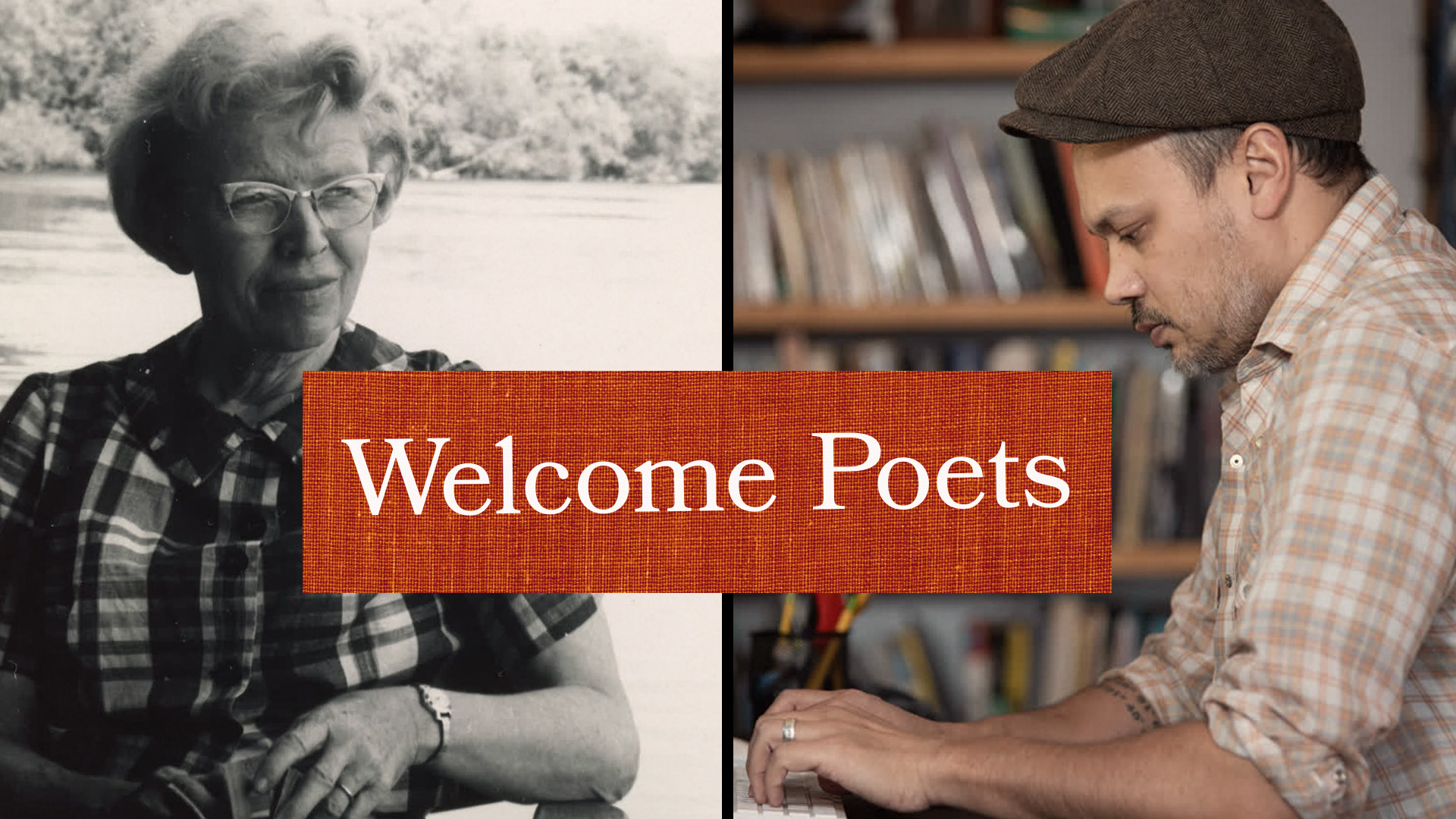




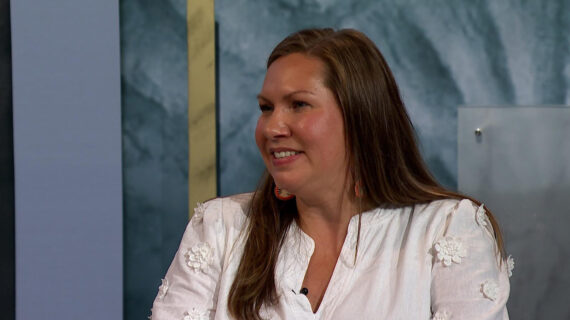
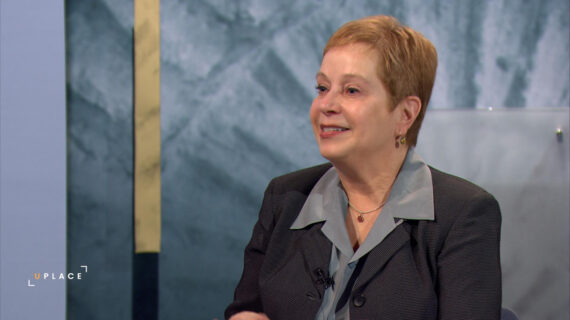

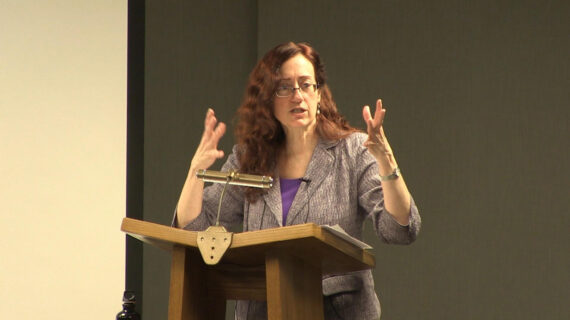
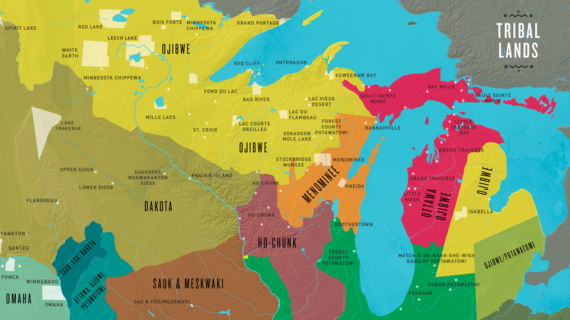
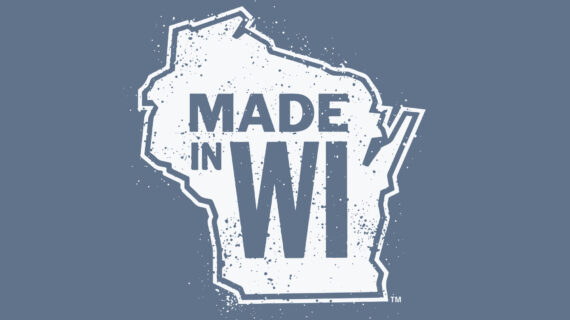

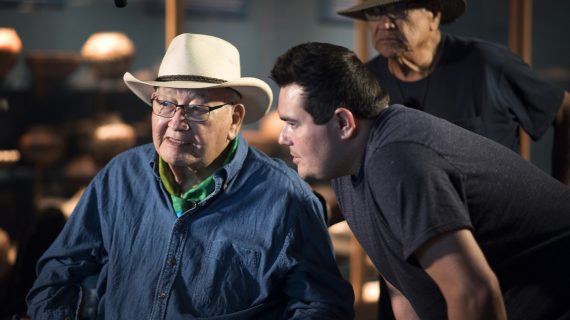



Follow Us